Beyond Silicon Valley: How startup hubs like Singapore have evolved to lead the way globally
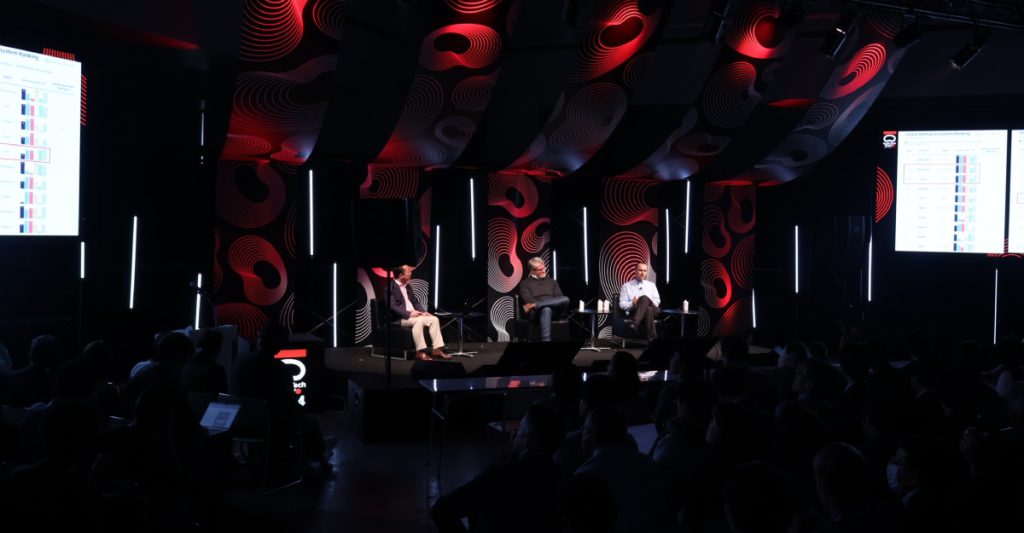
Ask any startup expert, and they’ll tell you that the best place to launch a company is the United States (U.S.). This would have been sound advice— around 10 years ago.
In 2012, six of the top 10 startup hubs were based in the U.S., and nearly two-thirds of early-stage funding was concentrated in North America.
But we are in a vastly different startup ecosystem today, one in which success isn’t made in America—or any one nation. It’s built globally.
As part of this year’s SusHi Tech Tokyo Global Startup Programme, Marc Penzel, founder of research and policy advisory organisation Startup Genome, and venture capitalist Mike Jackson took to the stage last Wednesday (May 15) to share insights on the evolution of the global startup ecosystem over the past decade.
Asian and European startup ecosystems are climbing up the ranks
When Marc and his team launched Startup Genome around 12 years ago, they found that about 80 per cent of the value generated in the global startup ecosystem was concentrated in just four cities.
Nearly all high-growth technology startups emerged from these cities, notably from Silicon Valley and Boston. But this trend seems to have come to an end.
Since [our first report], what we’ve been seeing is that this concentration has gotten less and less. So many different cities are now able to produce not only startups, but also scale ups and to a great extent, unicorns as well.
We’re really seeing that more of these places are actually capable of participating in the startup ecosystem and in the global economy, which is both fascinating and exciting.
– Marc Penzel, founder of Startup Genome
Today, numerous other Asian and European ecosystems are ascending in the ranks, solidifying their place as top hubs for startups worldwide.
Last year, Singapore climbed 10 spots to claim the eighth position in Startup Genome’s global startup ecosystem ranking, emerging as a leading startup ecosystem in Southeast Asia with an ecosystem value of US$144 billion.
What do you find in a “great” startup ecosystem?
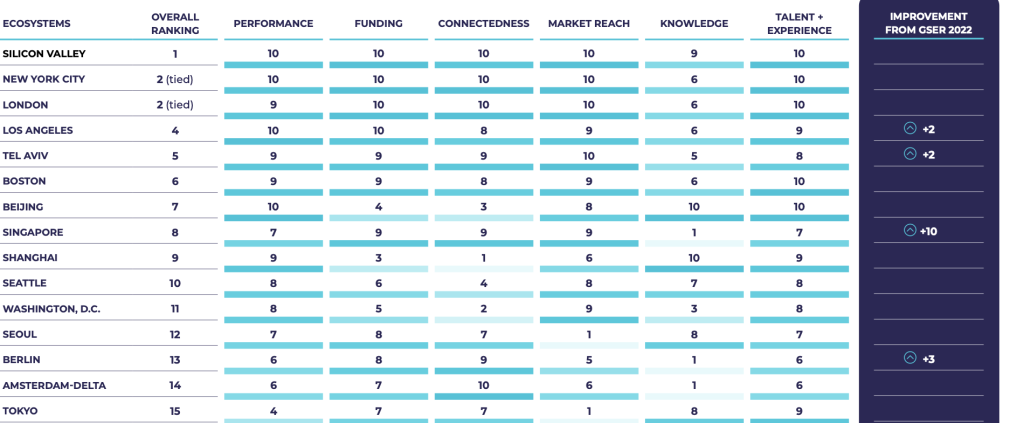
Despite the ascent of Asian and European ecosystems, Silicon Valley still continues to reign as the top startup hub. “All of the things that you need in an ecosystem, you find them in Silicon Valley,” Marc emphasised.
One reason for this is that many of these ecosystems are still “light on liquidity” said Michael. “These ecosystems are not actually having exits, so oftentimes, you have to get companies to North America to have successful exits.”
Nevertheless, this doesn’t undermine the advancement of Asian and European ecosystems in fostering successful startups.
According to Marc and Mike, globalisation has played a major part in the success of these ecosystems. Startups that are better connected to both the local and global community tend to grow their revenues faster than those with limited connections.
Additionally, ecosystems that are abundant with institutions of higher education and research institutions are often better positioned to cultivate successful startups by providing more avenues for entrepreneurs to collaborate.
Marc added that the final element that can foster a successful startup ecosystem is the availability of quality talent and seasoned entrepreneurs experienced in navigating the intricacies of startup ventures.
How else can a global ecosystem thrive?
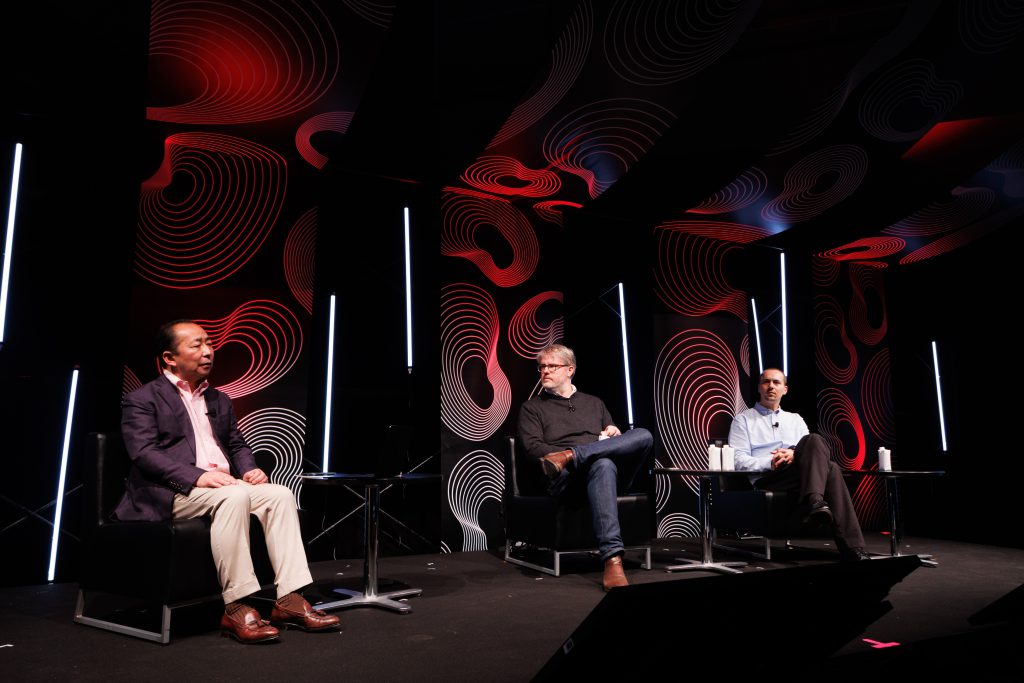
Beyond these factors, an often overlooked element that can propel a startup ecosystem to greater heights is international experience. No matter the demographic, individuals within an ecosystem, whether startup founders or students, can benefit immensely from global exposure.
Take a university student, for instance. “Being exposed to startups and one of the top ecosystems just opens your mind,” shared Marc. “It typically broadens your perspective around the opportunities of taking a leap of faith, working on something that has a big mission, and really, you know, being part of the global startup community.”
And when you look at early-stage companies, it’s important for them to attend international tech and startup conferences like the SusHi Tech Global Startup Programme to build connections and immerse themselves in new ecosystems to glean insights on the latest developments in their industry.
If you, as an entrepreneur, have the opportunity to go spend a few months in Silicon Valley, you will definitely have a learning experience that you’re just not going to get elsewhere. At the very least, you’ll get exposure to the sort of those best practices in the startup realm.
Especially if you’re coming from an ecosystem that might be a bit more conservative, or a bit less developed, this knowledge allows you to push back against perhaps bad terms that investors are offering or term sheets that are just inexcusable.
– Mike Jackson
This international exposure, in turn, contributes to the overall vibrancy and competitiveness of a startup ecosystem.
Building a thriving ecosystem is a nuanced and intricate endeavour
The startup ecosystems that have risen to the top have come a long way in building their hubs, having traversed remarkable journeys in nurturing their entrepreneurial landscapes.
They have all had their ‘Cambrian moments’, where the first one or two or three startup success stories emerged, catalysing a surge of talent embarking on their own journeys. The wealth that was made from the first big exits was reinvested back into the ecosystem, fuelling further growth and innovation.
– Marc Penzel, founder of Startup Genome
Building a thriving startup ecosystem is a nuanced and intricate endeavour, requiring steadfast commitment over time, added Marc. “Hence, it’s important to recognise the need to be patient and persistent as a community.”
“I wouldn’t get too caught up with short-term failures or drops in the rankings, because you’re trying to build a very complex system with lots of ideas and synchronicities. And it takes a perhaps a road with many different curves, but at the end, you’re driving in the right direction and it just takes time for you to get to the to the destiny that you want to be.”
Featured Image Credit: Tokyo Metropolitan Government
Also Read: More than just a brilliant idea: What does it take for your startup to be the next success story?
Singapore partners with Microsoft to accelerate AI adoption in SMEs
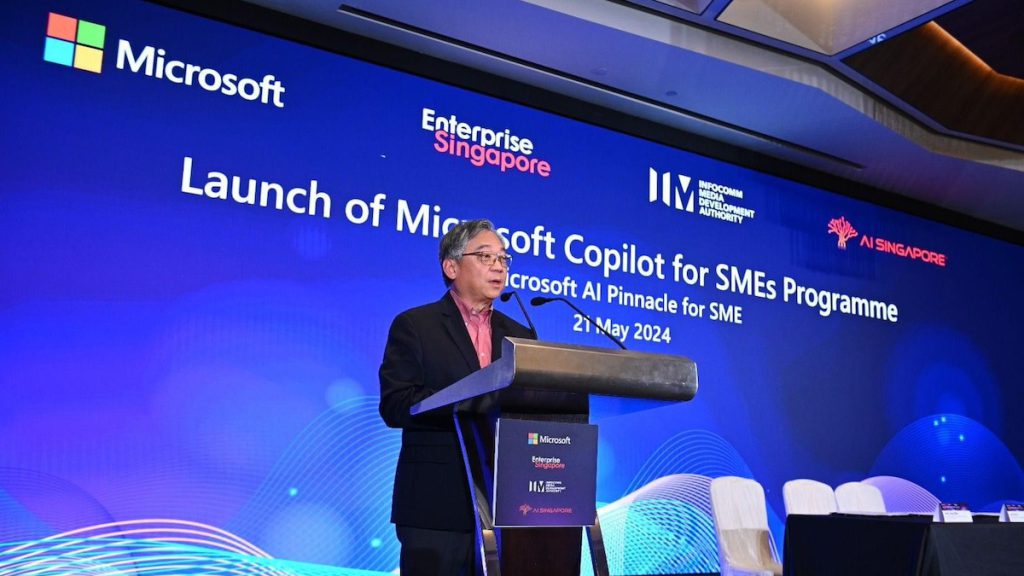
Singapore SMEs (Small and Medium Enterprises) have more avenues to adopt AI with new programmes that result from a collaboration between Enterprise Singapore, AI Singapore (AISG), the Infocomm Media Development Authority (IMDA) and Microsoft.
These initiatives, announced at the launch of Microsoft Copilot for SME event, which was attended by Mr. Gan Kim Yong, Deputy Prime Minister and Minister for Trade and Industry, will help Singapore companies access AI solutions and develop AI-related capabilities.
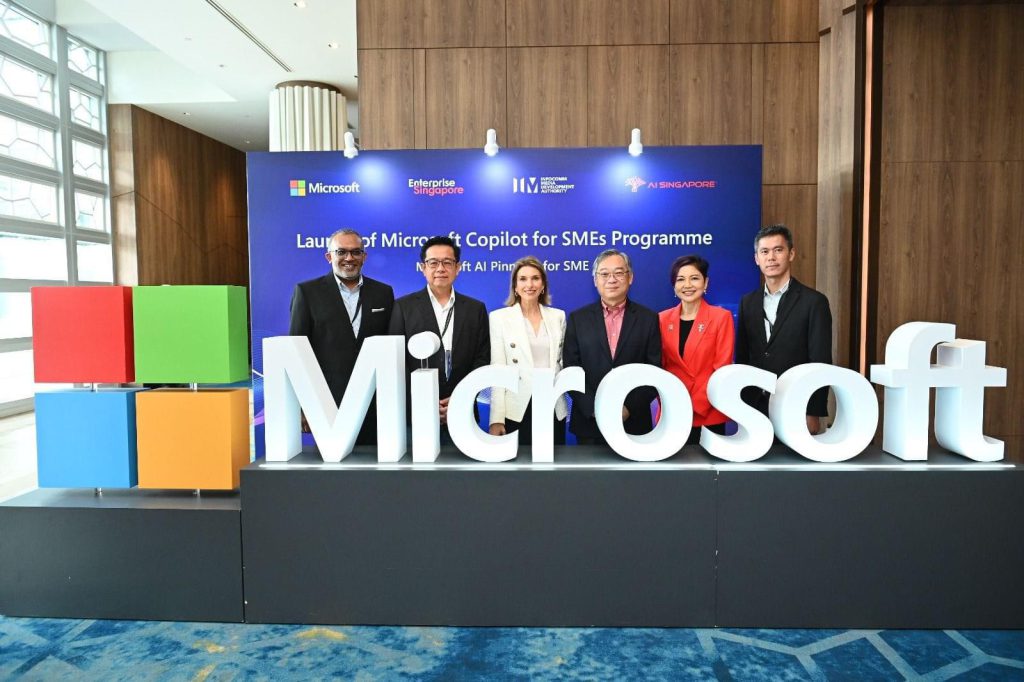
Microsoft Copilot for SMEs programme
Jointly administered by Microsoft, EnterpriseSG, and AI Singapore (AISG), this programme aims to drive the adoption of the Copilot for Microsoft 365 solution among local companies. SMEs can look forward to working with Microsoft’s appointed partners to adopt Copilot for Microsoft 365 and participating in specially designed training workshops to harness the AI-powered solution effectively for enhanced everyday business productivity.
SMEs can also tap on AISG’s suite of training programmes and workshops to educate themselves on the broader applications of AI beyond Copilot for Microsoft 365.
EnterpriseSG will defray 50% of the Copilot for Microsoft 365 license costs for eligible businesses, and each SME will be able to purchase up to 50 licenses at the subsidised rate for a 12-month subscription period. Through the programme, EnterpriseSG aims to support more than 1,000 local SMEs in adopting Copilot for Microsoft 365 in the next two years. More information can be found here.
Applied AI programme at Institutes of Higher Learning (IHL)
EnterpriseSG will also support SMEs looking for more sophisticated AI integration or unable to find suitable “off-the-shelf” solutions, to develop and deploy bespoke AI solutions. Under the new Applied AI programme at IHLs, EnterpriseSG has partnered with institutes that can work directly with SMEs to curate AI problem statements, build customised market-ready AI solutions, and deploy them across various business functions.
To help defray some of the associated costs, EnterpriseSG will provide a 50% subsidy for eligible SMEs to develop and adopt these customised AI solutions through this programme.
The Applied AI programme will start with Nanyang Polytechnic (NYP) and Singapore Polytechnic (SP) from June 2024. Leveraging their technical expertise in AI and industry experience, the programme will enable SMEs to identify specific pain points and develop effective AI execution strategies, solutions, and implementation plans.
Over the next few years, EnterpriseSG will progressively bring on more IHL partners and aim to support more than 100 SMEs under this programme.
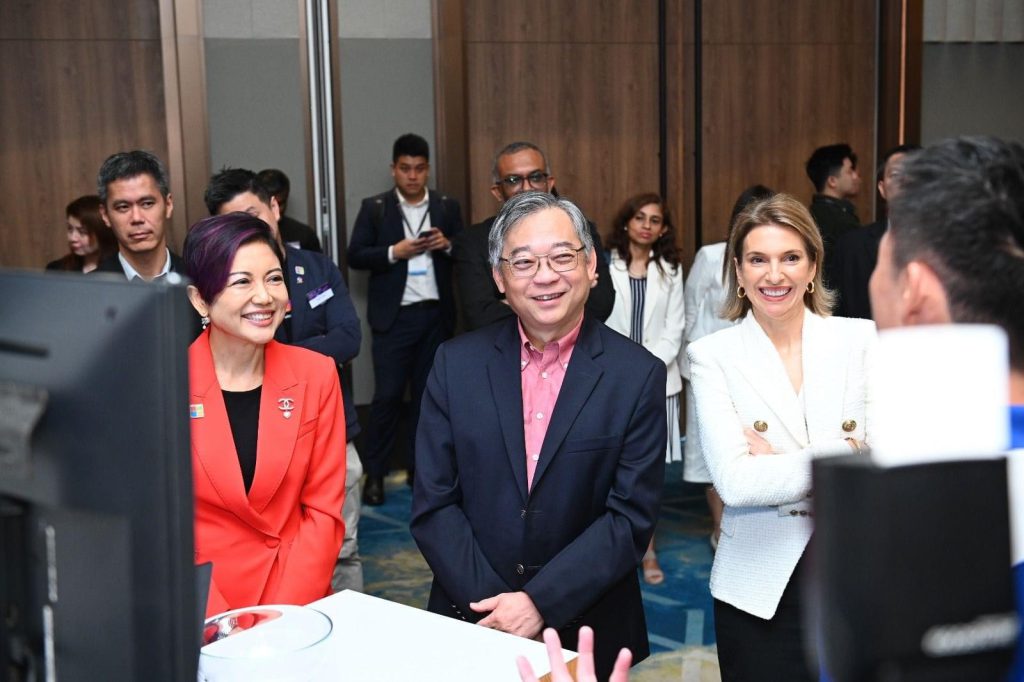
Digitally Mature Singapore Enterprises
The IMDA and Microsoft have also signed a new Memorandum of Intent (MOI) to help SMEs and technology vendors leverage generative AI (GenAI), enabling digitally mature enterprises to strengthen their capabilities in GenAI and to develop and deploy customised GenAI solutions, with more than 200 digitally mature Singapore SMEs to benefit over the next two years as a start. Microsoft and IMDA will also uplift tech providers in enabling their solutions with AI capabilities that would help scale AI adoption amongst SMEs.
This is Microsoft’s second AI initiative for Singaporean companies in 2024. In March, the tech giant signed two Memorandums of Understanding (MOU) with SkillsFuture Singapore and NTUC LearningHub to raise AI literacy in Singapore.
Featured Image Credit: Enterprise SG. Mr. Gan Kim Yong, Deputy Prime Minister and Minister for Trade and Industry
This M’sian couple traded their careers in oil & gas to grow their muslim prayer wear biz
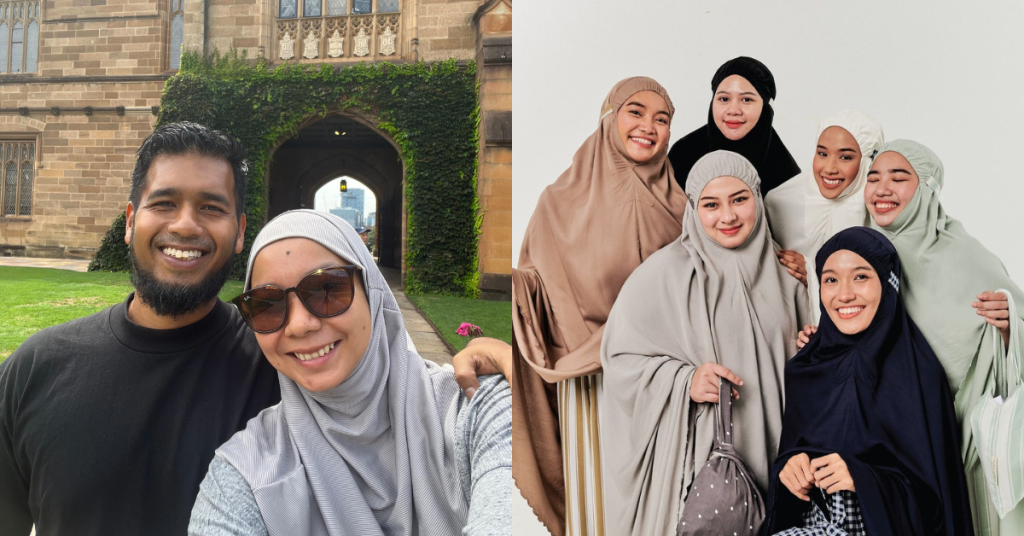
Growing up, Erina’s life path was pretty much paved before she hit the ground running. She was raised by a father who worked as an engineer and had his own engineering consulting firm. Whose steps would she have followed if not his?
So she joined the oil and gas industry upon graduating from the University of New South Wales with a chemical engineering degree. Then fate had other plans.
While working at Sapura Energy (previously known as Sapura Kencana), Erina met Anas. A romance blossomed between them and they got married two years later.

It wasn’t long after that the couple decided to start Zaahara, an ecommerce business selling good quality Muslim essentials. At the time, ecommerce was just taking off in Malaysia and there was a market opportunity.
But another entrepreneur had the same idea and FashionValet was born. The only difference? Anas said that FashionValet had a clear growth plan from the get-go whereas Zaahara was still finding its footing.
Understanding that business could be better, Erina and Anas left their day jobs to pursue Zaahara full time. This turned out to be a good idea as it led them to securing their market niche.
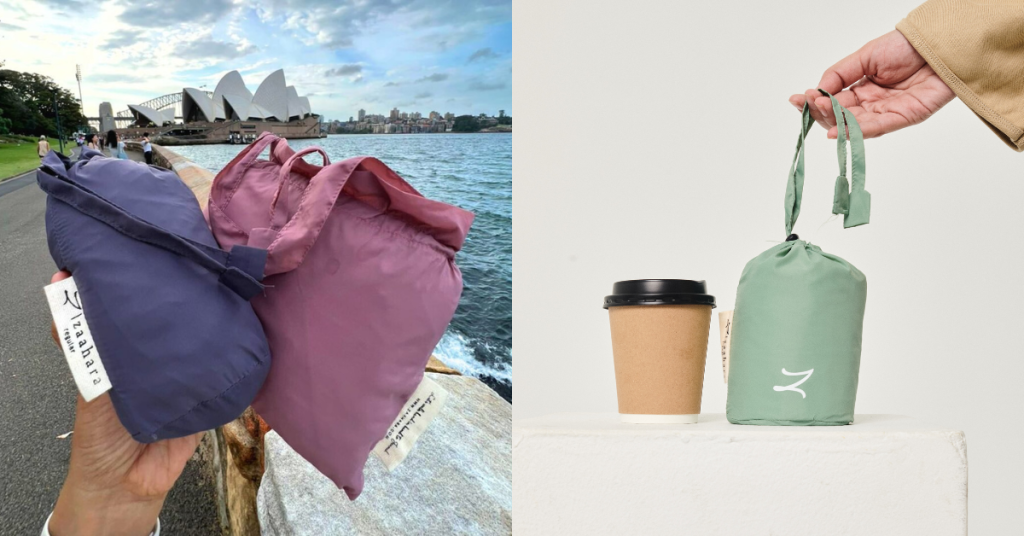
Giving an old product new life
Speaking candidly, Anas explained that their mistake was targeting the mass market. It took them nearly 10 years before they realised that they should be focusing on a specific niche—on-the-go prayer wear (or telekung in Malay).
The usual telekung that’s commonly found in Malaysia tends to be made of thick cotton material and is therefore bulkier. Conversely, Zaahara’s lightweight prayer wear is made of lighter materials like nylon and polyester mix.

“The demand has always been there but there is no brand that champions this segment,” Anas said. “We get inspiration from AirAsia. Before Airasia, everyone still flew but when they created the [market] space of cheap flights, suddenly there’s a big demand.”
In that same light, he shared that lightweight telekung was already a known product. However, it was marketed as being a travel telekung, so people connected it to only be meant for travelling.
Giving the product a rebrand opened it up to a wider market. The overlooked travel telekung now turned into a daily companion for those busy working at offices, commuters, and adventure seekers.
Zaahara’s current bestseller is the On-The-Go Marisa prayer wear (starts from RM119) that the brand claims to be “the size of your palm”. It weighs approximately 200g which is about the same weight of an iPhone. This makes it convenient to pack into handbags and laptop bags.

There’s plenty of telekung to go around
The brand’s first lightweight telekung, its On-The-Go Sofia prayer wear (starts from RM120), was released in 2015, three years after Zaahara launched. By 2023, they had sold over 12,000 pieces.
That’s about 125 pieces sold every month for eight years. It might not seem as impressive at first glance, but the market isn’t the same as they’re not perishable goods like F&B.
There haven’t been any studies done on this yet, but as a Muslim myself, I’ve found that we only buy a few telekung throughout our life. This is because we usually have up to three at a time and use them for as long as possible.
Why toss out something if it’s not broken (or in this case, torn), right?
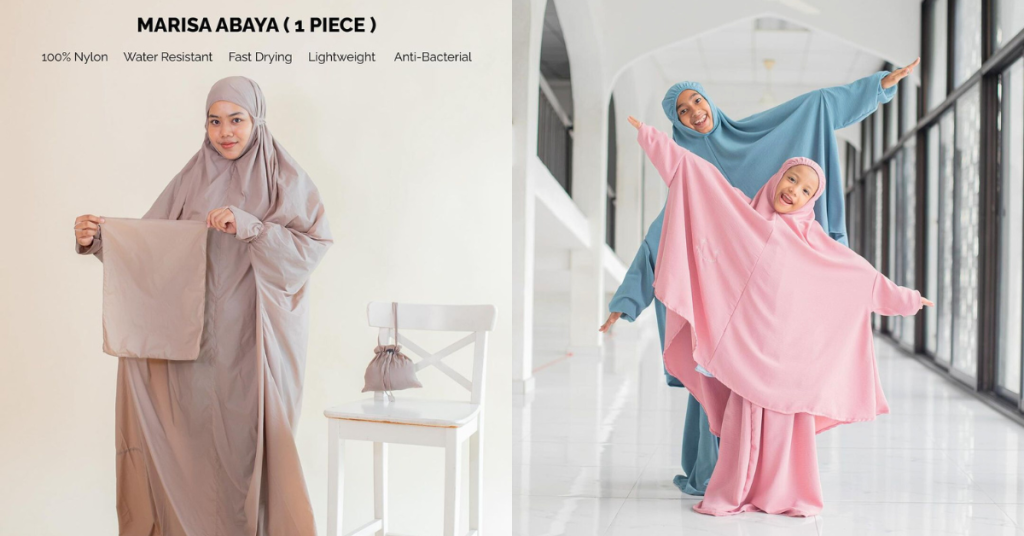
This would come up as a challenge when Zaahara scales up in the future. But the couple aren’t too worried about that. They’ve found that the trend nowadays is that people tend to purchase a few for different purposes.
“They will also buy them as gifts for friends and family, and for charity,” Erina shared. Considering that the local population of Malaysian Muslims is 63.7% at the moment, running out of a market segment to serve isn’t a concern yet.
A one-stop shop for on-the-go Muslims
Sharing with us, Anas attributed part of the brand’s success so far to Cradle’s Coach & Grow programme. Besides that, he also thanked Ekuinas (a private equity firm) for their assistance in the rebranding process.
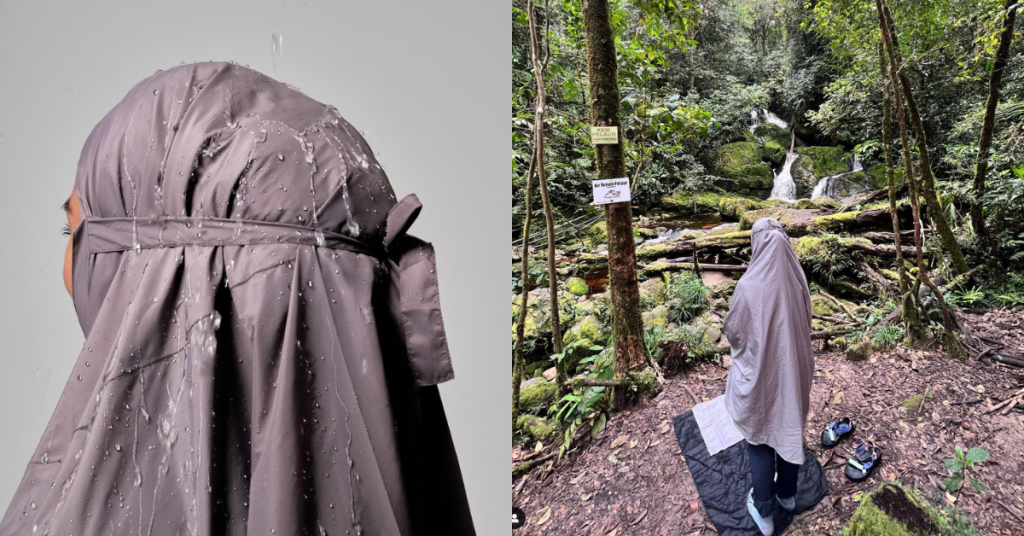
Its rebranding process took a year, involving personal surveys and a closer analysis of competitors. Only then did Anas and Erina notice that they should channel their focus towards the on-the-go Muslim crowd.
Having been in the corporate world with no entrepreneurial experience, these two organisations helped the couple better understand market needs. It also showed them the potential that Zaahara had and the importance of brand positioning.
“The market is saturated but the demand is evergreen. Same like nasi lemak, it is saturated but it is evergreen and the demand will always be there,” the founder stated.
As such, Zaahara is looking for strategic partners that have an eye for investment and share a vision of capitalising the Islamic clothing market. For context, Business Research Insights reported that the market is expected to reach over US$90 billion by 2027.

To grow further, Erina shared that they’re looking to not only take the business offline but also further expand their product range. They currently offer jubah and abaya amongst other Muslim essentials and hajj pilgrimage items.
Their goal? To be the brand providing solutions to on-the-go Muslims, enabling them to embrace their faith anytime, anywhere.
Also Read: Net zero explained: Why Amazon, Microsoft, & M’sia itself are pledging to be carbon neutral
Featured Image Credit: Zaahara
Why Malaysia still needs women-only communities, according to this woman who’s building one
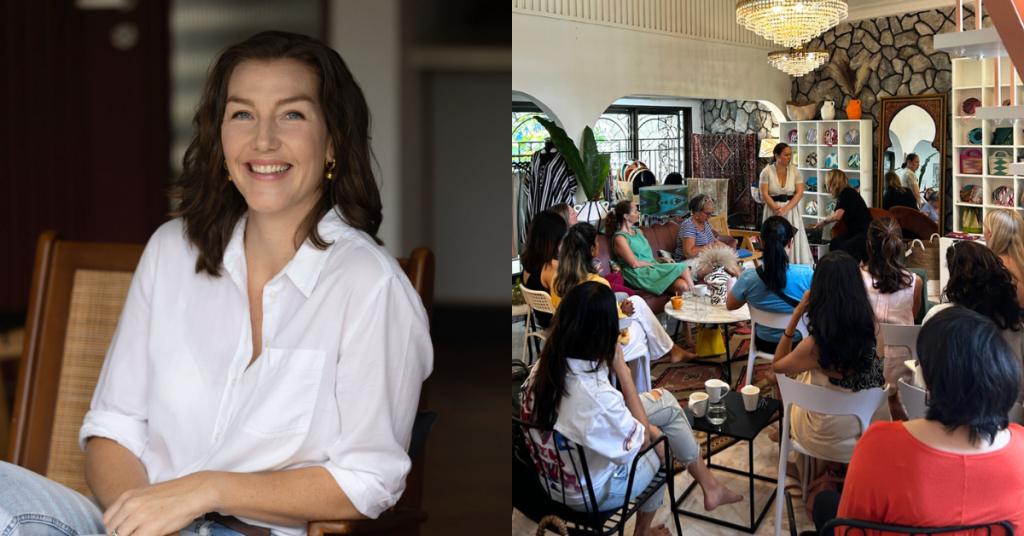
Championing a cause doesn’t have to be an all-or-nothing endeavour. The drive for more equality is one such instance.
“We’re not suggesting that having women-only events and communities is the only way to go,” Kate Sarginson, the lady behind female-founder group On The Rise stated.
“However, conventional [mixed-gendered] conferences and business gatherings have historically leaned heavily towards male representation, resulting in a noticeable absence of women’s voices and if you can’t see and hear—you cannot learn.”
In her near-two decades of corporate experience in Malaysia, she found that women-only events provide a uniquely supportive environment. Senior leaders and founders of the fairer sex tend to feel more empowered, which allows them to share more vulnerably.
You could argue that this takes us a step back from gender equality, but there are layers to her reasoning.
For example, an alcoholic would speak more freely of their struggles in an AA (Alcoholics Anonymous) meeting. Since everyone’s going through similar struggles due to their predicament, there’s a lack of harsh judgement and stronger relatability.
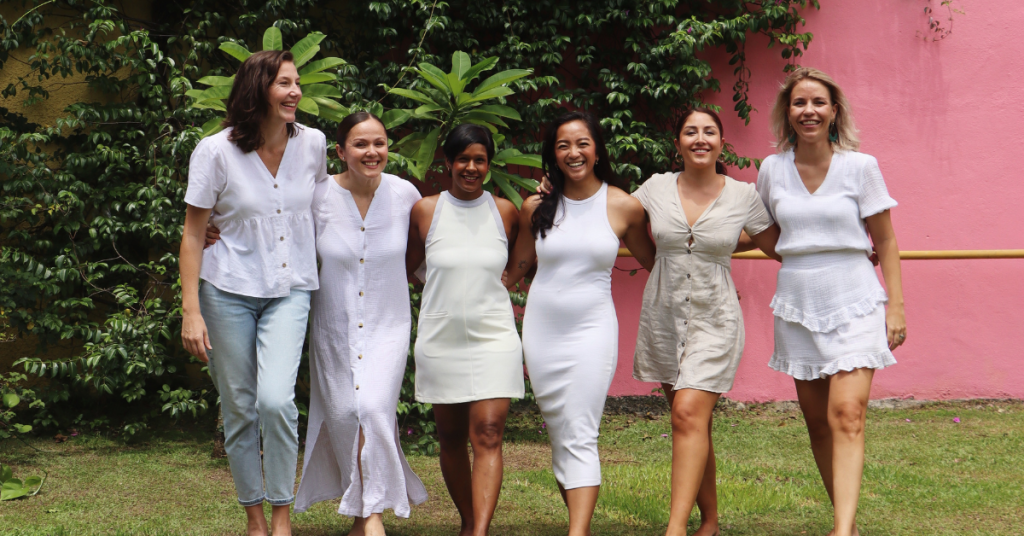
That’s exactly why Kate started On The Rise in September 2022 with eight other women.
A space for women, by women
Just like any other organisation, the premise is to create a sense of belonging for its members. In this case, it’s female founders and women in business within Malaysia.
“Our aim is to catalyse positive transformations in how women nurture their businesses and personal development journeys. We’re dedicated to creating platforms where our members can forge valuable connections, access vital information, and seize opportunities that might otherwise elude them,” Kate shared.
The way On The Rise carries these out is by hosting monthly curated programmes sessions aimed towards growth and supporting the ascension to leadership positions. This includes business-related workshops and discussions, sometimes in collaboration with other groups.
It’s similar to many other women-focused organisations in the country that have the same goals, like Female Founders in Malaysia and Southeast Asia on Facebook.
But Kate explained that their focus isn’t too much on networking opportunities. Though, those certainly play into the “why’s” of its existence.
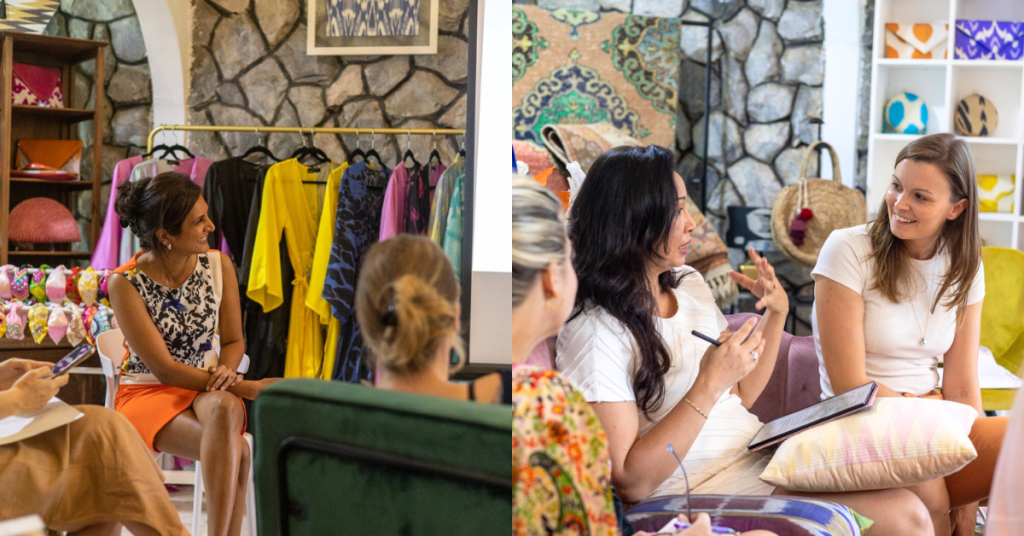
Instead, On The Rise emphasises heavily on nurturing authentic relationships and providing grounds for impactful knowledge exchange. This is achieved through a structured onboarding process and active communication channels like WhatsApp and a weekly email.
There are currently over 300 members from over 10 industry sectors. Some of them are familiar faces in the entrepreneurial scene like Anabelle Mericent of La Juiceria and Deborah Henry of Fugeelah.
Money makes the world go around
Another way the non-profit organisation embodies is through its recent inaugural business summit called Rise with a theme on money. The main agenda included:
- educating attendees on various funding avenues beyond traditional venture capital,
- tips on preparing a solid, and more importantly compelling, business plan for pitching,
- the keys to building relationships with investors and mentors, and
- how to remain resilient in the face of rejection.
This goes beyond the day itself. The aim of the summit is to provide participants with practical financial tips while connecting them with other players and stakeholders in the industry. Part of this includes a Funding Corner by pitchIN (an equity crowdfunding platform).
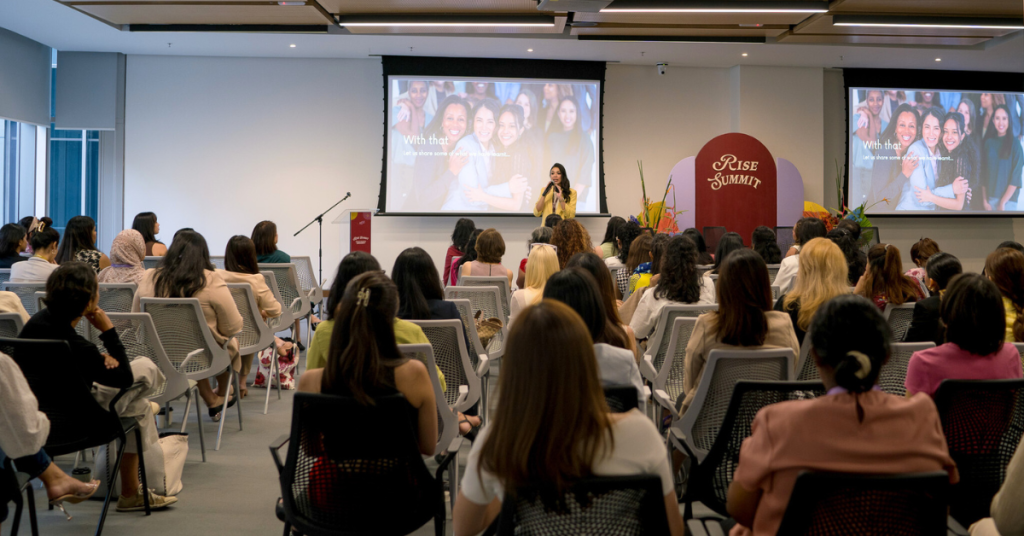
“Our relationship with money is complex and is often the stumbling block between where we are today and how we are going to reach our goals. [So] we wanted to create an event where women can take action and turn their insecurities and uncertainties about money (both in life and business), and turn it into a strength,” Kate said.
All that said, she explained that there isn’t a “no men allowed” rule. The topics for the Rise summit are simply geared more towards women and their relationship with money.
Speaking candidly, Kate shared, “The reality is juggling responsibilities such as childcare, professional careers, entrepreneurial pursuits, and caring for elderly relatives still often falls to the women, leaving little room to prioritise our financial well-being.”
So there’s a disparity in the time and energy resources that women and men have.
From here, On The Rise plans to host more annual summits with an even larger roster of international speakers. They’re particularly looking to create a series of more practical workshops on the topic of finances with its community partner, Wahine Capital, to further support members.
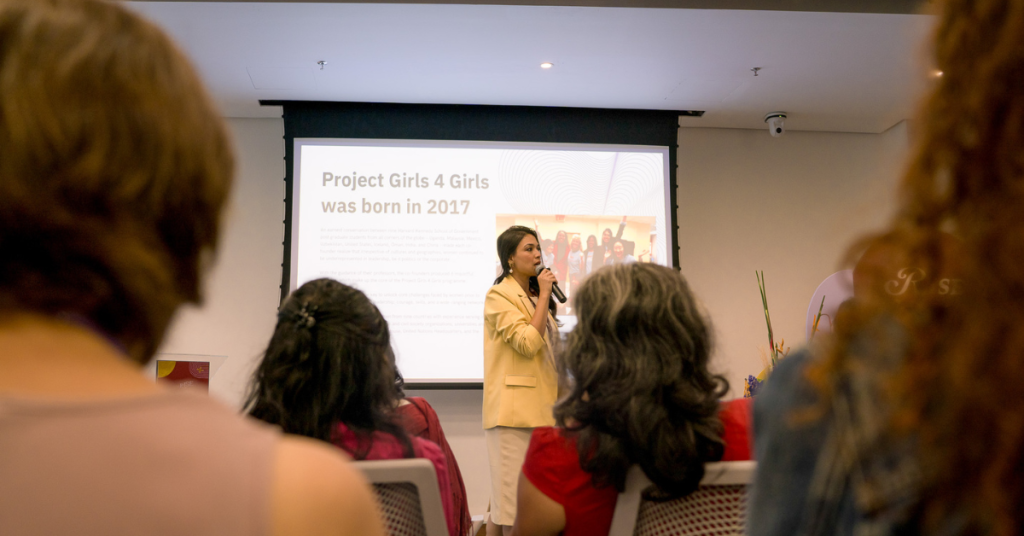
But when will we stop needing such gender-based organisations?
Looking at it realistically, there’s still a long way to go before we’d stop needing women-only organisations and events. Because we’re still far from having equal representation in the business world.
According to the Malaysia Venture Capital Roadmap (2024 to 2023), only 14% of decision-makers in Malaysian venture capital firms are women. Globally, there are only 4.9% of female VC partners, with only 2% of venture funding going to female-founded startups.
So it’s less of a “woe is me” stance, and more of acknowledging that societal differences exist. The goal posts for both genders are different and therefore need different initiatives to tackle those imbalances.
Perhaps if we had a specific timeline to meet these goals, it might accelerate the process. Kate believes that although Malaysia has been making steady strides to move forward in recent years, there’s still progress to be made, and On The Rise will be playing its part to help us achieve those goals.
Also Read: How financial institutions & universities are reshaping their network through AI-native solutions
Featured Image Credit: On The Rise
Why this M’sian HR management system is trusted by 1.5k companies, including CTOS & A&W
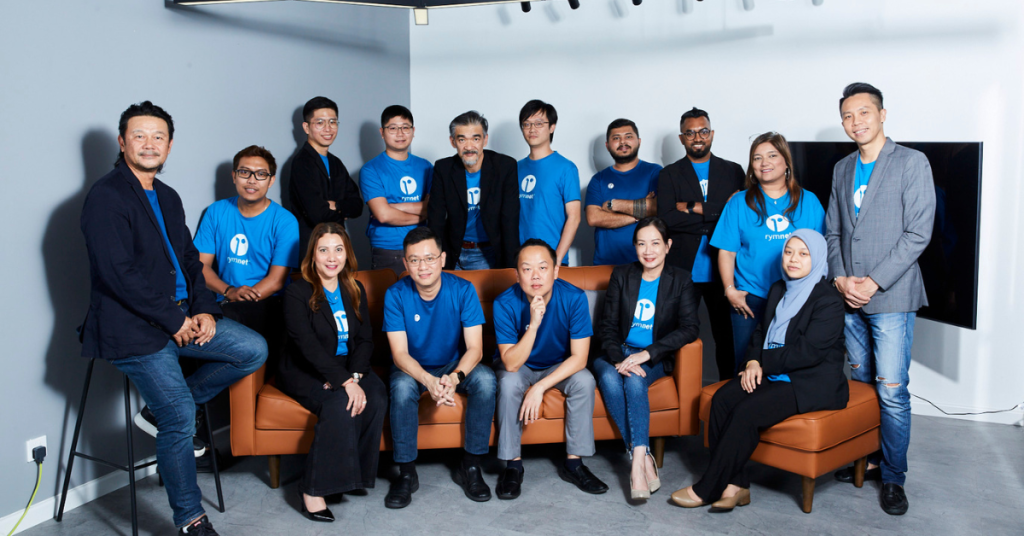
[Written in partnership with PubliCT.io, but the editorial team had full control over the content.]
You don’t have to be a HR professional to know that many HR processes can be quite finnicky and even inefficient at times.
Someone who knew this well was Bryan Un, who did happen to work with HR professionals. He noticed how many struggled with administrative tasks, especially during peak times like end-of-month payroll processing.
Wanting to improve their jobs and revolutionise HR management as a whole, he founded Rymnet Solutions (Rymnet) in 2011.
Since then, the company has been pioneering HR Management (HRM) Cloud and Mobile Solutions in Malaysia, helping businesses digitalise their HR operations.
A whole suite of various solutions
So, how exactly are they doing that?
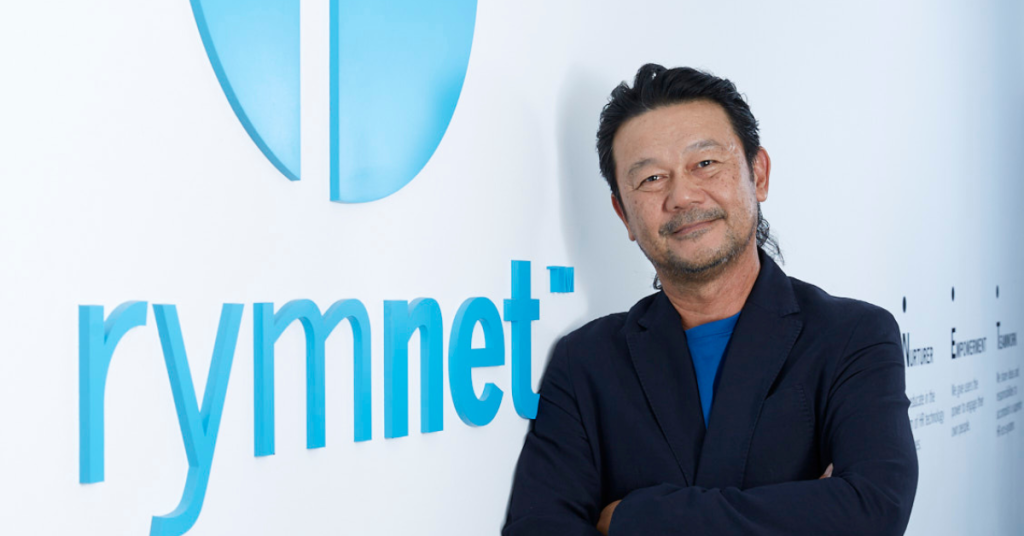
Well, Rymnet covers a variety of different services, dedicated to developing and integrating all components of the HR ecosystem.
Their solutions ensure seamless functionality across tasks like recruitment, onboarding, performance management, training, payroll, and employee engagement.
Some standout solutions include Rymnet’s Smart Payroll Tracker, which the team believes is a revolutionary tool designed to streamline payroll processing for HR users.
“Its innovation lies in its ability to automatically detect errors in payroll calculations, reducing the risk of mistakes that could result in costly penalties for the company,” the team explained to Vulcan Post.
This feature not only saves time but also ensures accuracy and compliance with regulations, providing peace of mind to HR professionals and company stakeholders.
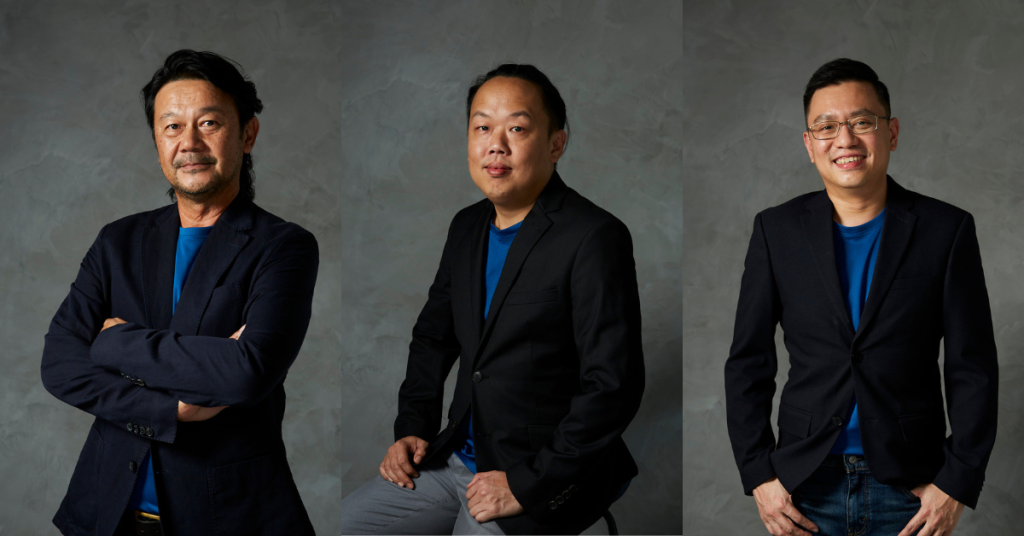
Rymnet’s flagship product is the Digitalization HRMS, which offers instant, real-time access to data.
The team elaborated, “For example, for HR to track lateness of the day, they can track the attendance in real-time, unlike other competitors’ system, which have a ‘cut-off time’ for data-viewing or require separate downloads.”
Rymnet also has ISO 27001 and SOC 2 Type 2 certifications, which are recognised standards for information security. They build trust by ensuring organisations adhere to stringent security practices through independent audits.
Tried and true
Yes, Rymnet offers a whole range of solutions that help streamline HR processes. But don’t just take it from us. Rather, what do their clients think?
That’s something they certainly aren’t short on. According to a press release, they are servicing 1,500 organisations from various industries, particularly in retail and F&B.

Amongst those clients include notable names such as CTOS and A&W.
The former shared that Rymnet’s solutions were able to improve their process time cycle by 20% while increasing team productivity by 30%.
Meanwhile, A&W’s representative said they maintained their HR headcount at three pax to manage a payroll from an initial 600 employees to 1,000 employees.
Aside from big corporations though, Rymnet also launched something called Rymbee to cater to SMEs.
Rymbee features only five modules: employee profile, payroll, leave, claim, and attendance.
This user-friendly platform is offered at an affordable price to cater to the growing number of SMEs in Malaysia. As a self-setup HR software, it allows SME owners to instantly purchase and utilise it.
While Rymnet’s pricing varies according to company headcount and specific requirements, Rymbee comes at a fixed pricing formula.
Staying ahead of the curve
Of course, Rymnet isn’t the only HRM system out there serving companies in Malaysia.
Yet, the team believes that their brand stands out for a number of reasons. For one, there’s their innovative solutions that cater to the specific needs of Malaysian businesses.
Furthermore, the brand has established itself as an early adopter of cloud and mobile technology. In fact, it claims to be the first to establish HRM cloud mobile solutions in Malaysia, making them a pioneer in the scene.
And with a team boasting over 30 years of experience in HRM systems, Rymnet is able to leverage a wealth of expertise and industry knowledge.
To sustain this momentum in the coming years, Rymnet plans to continue innovating its product offerings. For one, it aims to use AI to in its HR solutions, such as for screening resumes.
Currently present in Singapore, Philippines, Indonesia, and Brunei, Rymnet Solutions is rapidly expanding its business operations in the APAC region particularly in Vietnam, Thailand and Hong Kong.
The company also told Vulcan Post that it will expand its presence by penetrating new industry sectors and geographical regions, like manufacturing, financial institutions, and conglomerate industries.
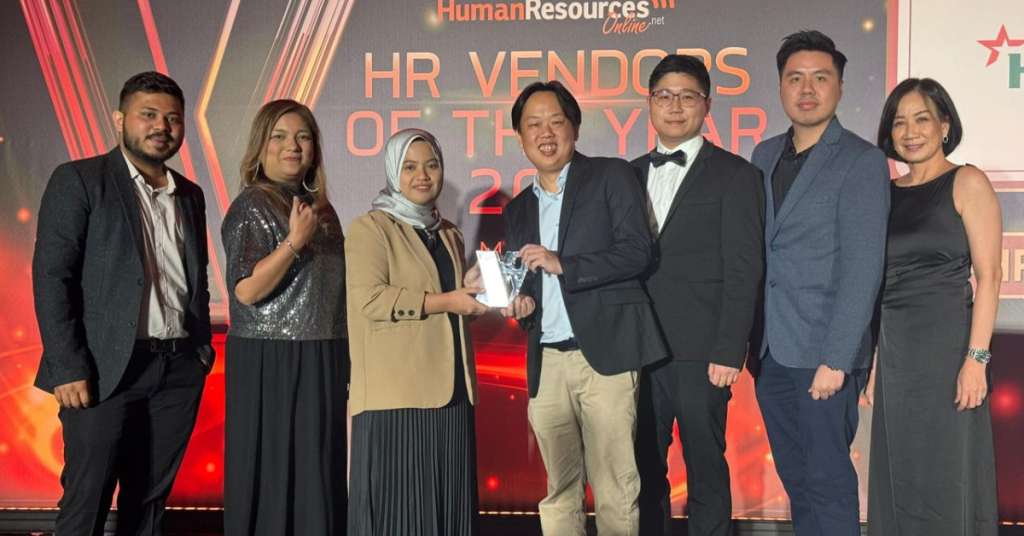
Creating a uniform solution for diverse industries has been a challenge, but Rymnet was able to tackle this challenge by adopting a modular approach to solution design, allowing for customisation and scalability.
In the long term, Rymnet hopes to become the number one HR solution provider in Southeast Asia, maintaining a focus on the retail industry.
“Rymnet will replicate the successful sales process and system requirements that have proven effective in the retail industry across other sectors within Southeast Asia,” the team shared.
Also Read: Net zero explained: Why Amazon, Microsoft, & M’sia itself are pledging to be carbon neutral
Featured Image Credit: Rymnet
Is Google using AI Overviews to sabotage AI development and save lucrative search business?

Disclaimer: Opinions expressed below belong solely to the author.
After a year in beta, Google’s Search Generative Experience, i.e. Google’s Gemini AI model providing direct answers or auto-generated summaries for selected search queries, is now being deployed to users around the world as “AI Overviews”.
And the early feedback isn’t good, with media outlets rushing to provide advice to frustrated users on how to get rid of the feature that is already annoying so many of them.

Under normal circumstances this could be considered a disaster. Imagine spending 12 months fine-tuning a feature only for most of your customers to reject it.
But what if that’s what was intended all along?
This may read like a bizarre conspiracy theory, but humour me a minute and it may soon seem less outlandish than you think.
Cui bono?
When identifying crime suspects, ancient Romans started by asking a simple question “cui bono?” — “who benefited?”. I think it’s where we might start as well, asking: “who would benefit from offering an inferior AI experience?”
Normally, a feature that fails to gain traction sets off alarms at the company. Apologies and fixes follow.
This was the case whenever ChatGPT was caught doing something weird — a patch was already on the way. But Google has spent a whole year working on a product that by account of many remains half-baked.
Just last month the internet was awash with critique of the AI-generated search answers and as recently as early May Gemini’s advice on how to pass kidney stones was to drink two litres of urine.

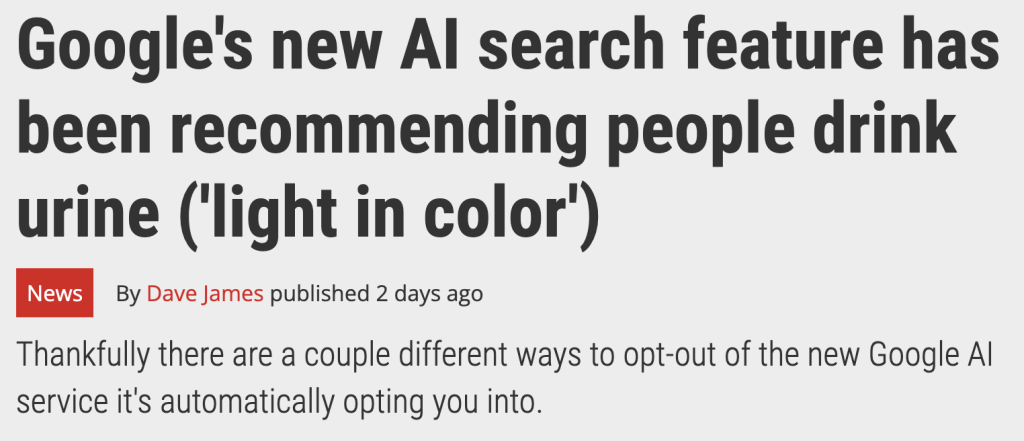
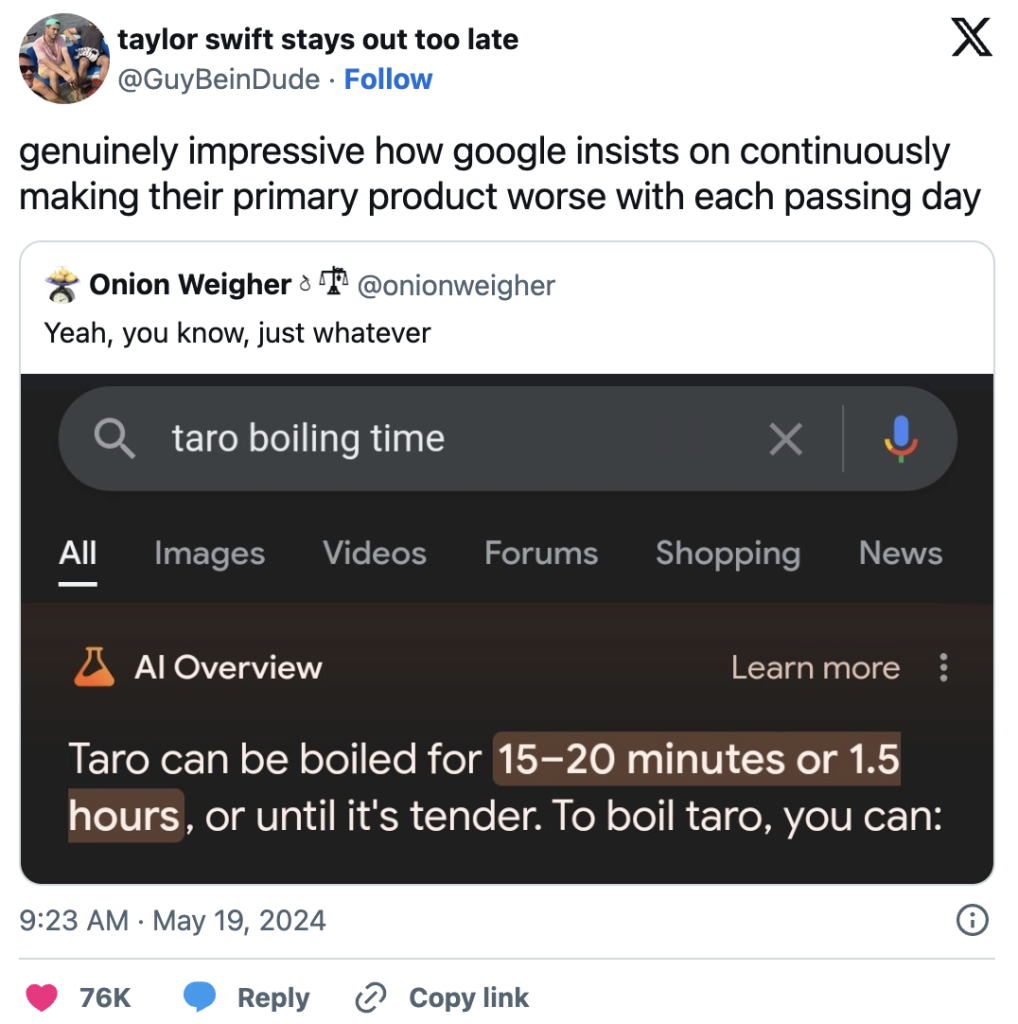
And this isn’t the first time either. Bard, the predecessor to Gemini, made wrong claims about James Webb Space Telescope being the first to capture a photo of an exoplanet, while just last week, the video assistant powered by Gemini suggested fixing a film stuck in a classic camera by opening its back, which would inevitably expose it to light and ruin anything recorded on it thus far.
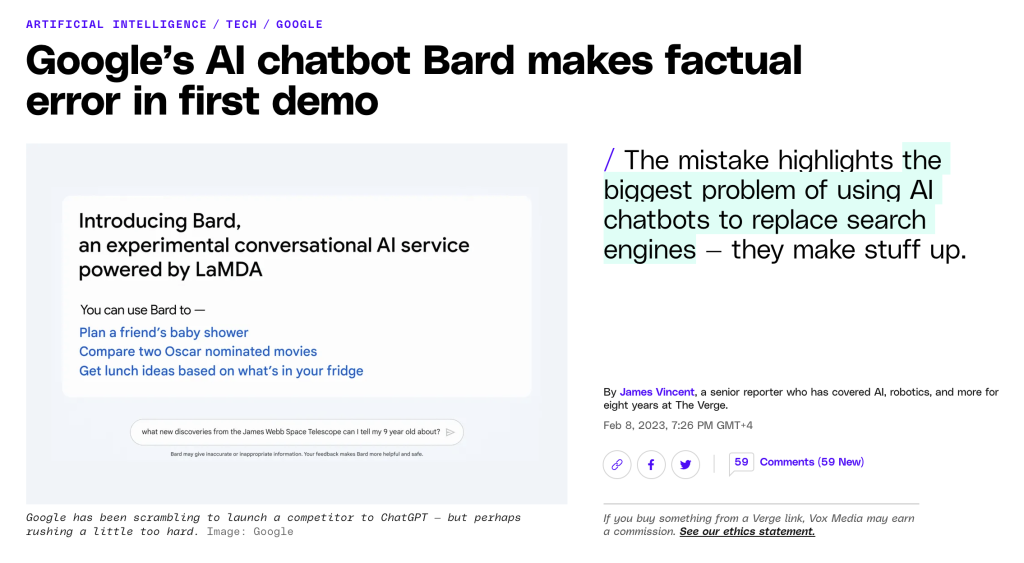
Of course Google’s chatbots aren’t unique in giving bad or bizarre advice. Its competitors, including the leading OpenAI, had their fair share of blunders. However, the difference is that they typically addressed them promptly, providing fixes and generally improving their models quite quickly over time.
Meanwhile, the search giant is stumbling even after spending a year reportedly fine-tuning its technology.
You just can’t escape the impression that Google is really dragging its feet on AI, rather than treating it as a priority investment.
And there are good reasons why it would.
Plugging a $175 billion hole
It seems that the company’s interest in artificial intelligence was dictated not by any desire to develop a superior technology which could power some amazing future products, but by the need to ensure it has a stake in it and figure out how to monetise it before it comes to obliterate its current main source of revenue: online search advertising.
Google ads displayed by search results on the site are responsible for 56% of its over $300 billion annual haul, bringing $175 billion in revenue last year.
Understanding that the first wave of AI solutions would come in a form of simple bots providing information, it must have been clear to Google’s leadership that they could flip the entire web search model on its head. It’s a mortal threat to the company.
Instead of having to browse through dozens of links — with ads accompanying them — people would just get an instant, accurate reply from an intelligent system trained on all of humanity’s information.
Where do you place an ad in that?
Even in queries with a commercial intent the space for inclusion of advertising would be greatly diminished as users would no longer have to scroll through many pages which provided ample space available to dozens of companies to put their ads there.
AI threatens to obliterate a tremendous amount of advertising real estate and greatly diminish anything left for ads next to AI Overviews.
At the same time, much like every other AI business, Google is struggling to find a way to make money from the new tech.
How do you plug a hole worth $175 billion with technology that is burning so much money that Sam Altman has to tour the Middle East monarchies trying to secure literal trillions for future development?
Yes, there’s some cash to be found in B2B solutions but it’s not enough. OpenAI’s revenue ballooned from nothing to $2 billion last year, but the company is still bleeding money. Meanwhile, billions of consumers won’t pay even 20 bucks per month to use a tool like ChatGPT.
At the same time, however, as is the case with every new technology, AI startups throw free features at people just to get them to sign up while they figure out monetisation later. All of a sudden the tired old Google search could be squeezed in the market that it is relying on.
The company, however, is in a bind, because it stands to lose no matter how it responds.
Google’s lose-lose future
Despite having significantly more resources than OpenAI, it’s clear that Google was quite conservative with investment over the previous years.
It wasn’t until ChatGPT took the world by storm, prompting Microsoft to drop $10 billion into OpenAI, that Google woke up and cobbled together a functioning product, Bard, out of the bits and pieces from projects carried out on the side.
Building a leading AI solution doesn’t seem to have been its motivation, because that would only accelerate change and inevitably disrupt its core business. Why cut the branch you’re sitting on?
It has always had the money but it would gain very little from being a leader in a race to, effectively, destroy itself.
On the other hand it cannot, of course, ignore the challenge, because that would mean the rules of the AI-powered world would be dictated by somebody else. It isn’t acceptable either.
It cannot leap ahead, it cannot stay back. So, what could it do to protect itself?
Since it is impossible to stop technological progress, the next best thing would be to tarnish it a little, instilling doubt in people as to its reliability.
How to eat your cake and have it too
There are of course many areas in which artificial intelligence is both of benefit to the world and a non-issue for Google. Image or video editing for instance, crunching big datasets to extract valuable information, identifying patterns in scientific, technological or security applications. The list is very long.
If only people could enjoy all of the above but still search the web manually — that would be the best compromise for Google.
But how do you fight a technology so vastly superior to clicking through dozens of spam links and not always relevant ads on a page that hardly changed since 1998?
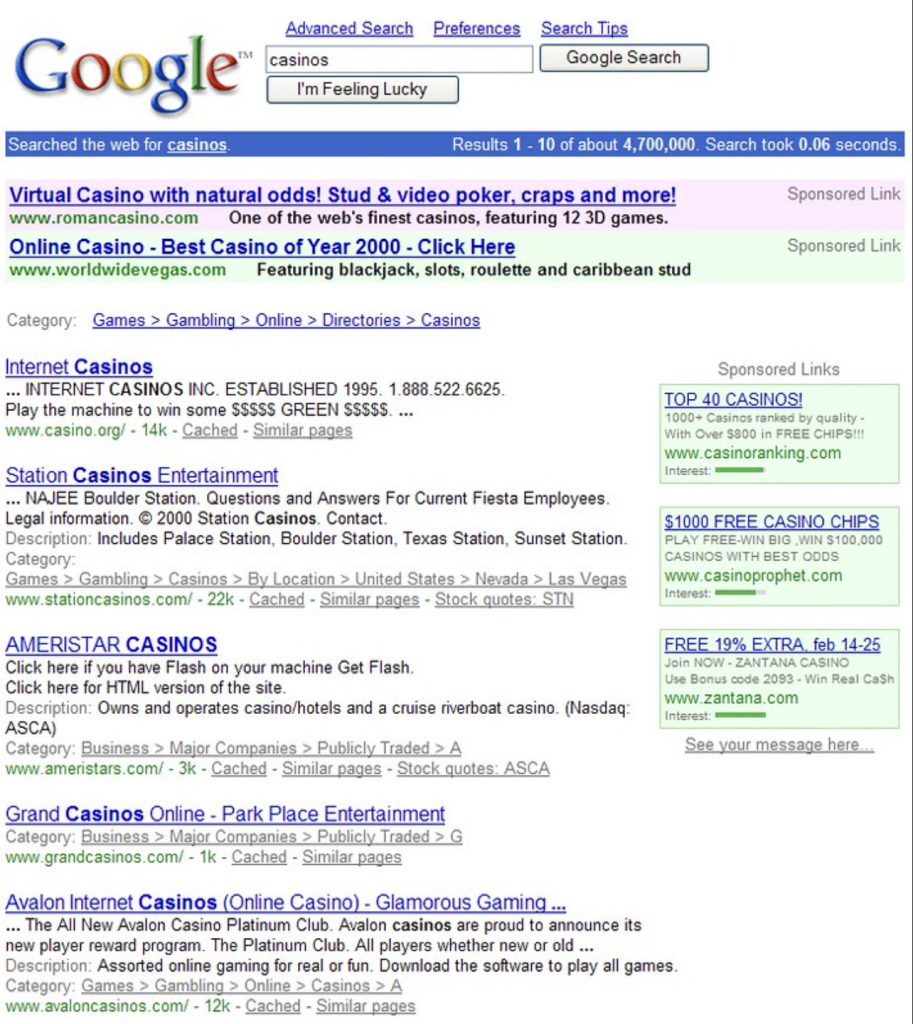
There may be a way: what if people didn’t quite trust the search done by AI?
Being a near-monopoly Google has the advantage of being able to shape what billions of us experience on the web every day, as search is often our gateway to it.
Releasing a half-baked new feature, frustrating millions of users into wanting to remove it is ruining that important first impression people have of artificial intelligence. Not only it doesn’t know everything, but it can give you really bad advice, so it’s better be safe and do your search the “old way”.
Would anybody in Google complain if that was the outcome?
The company has no real competitors and Sam Altman a few days ago dismissed the rumours that OpenAI would make a play to enter the search business in the nearest future. It’s likely to eventually but by then people will find it hard to trust any AI-powered search engine.
If Google couldn’t make it then how can we trust anybody else?
Startups are forgiven more. When ChatGPT hallucinated we reminded ourselves that it’s still a technology in development. But when an established giant like Google makes something a feature after testing it for a year, it becomes a defining experience. In this case: a bad one.
I’m not suggesting here that Google is deliberately making Gemini provide incorrect answers — that could be near impossible, considering millions of different queries that people enter every day.
What I’m saying is that it wouldn’t even be necessary, since an imperfect application of AI is good enough to create that bad impression already.
It’s really hard to believe Google really failed to make AI Overviews reasonably reliable even after a year of tests. And if it did, then why is it trying to dump it on all of us, despite objections being raised left and right?
Nobody is forcing it to, after all, and bad user experience can kill any product. But maybe that’s the goal?